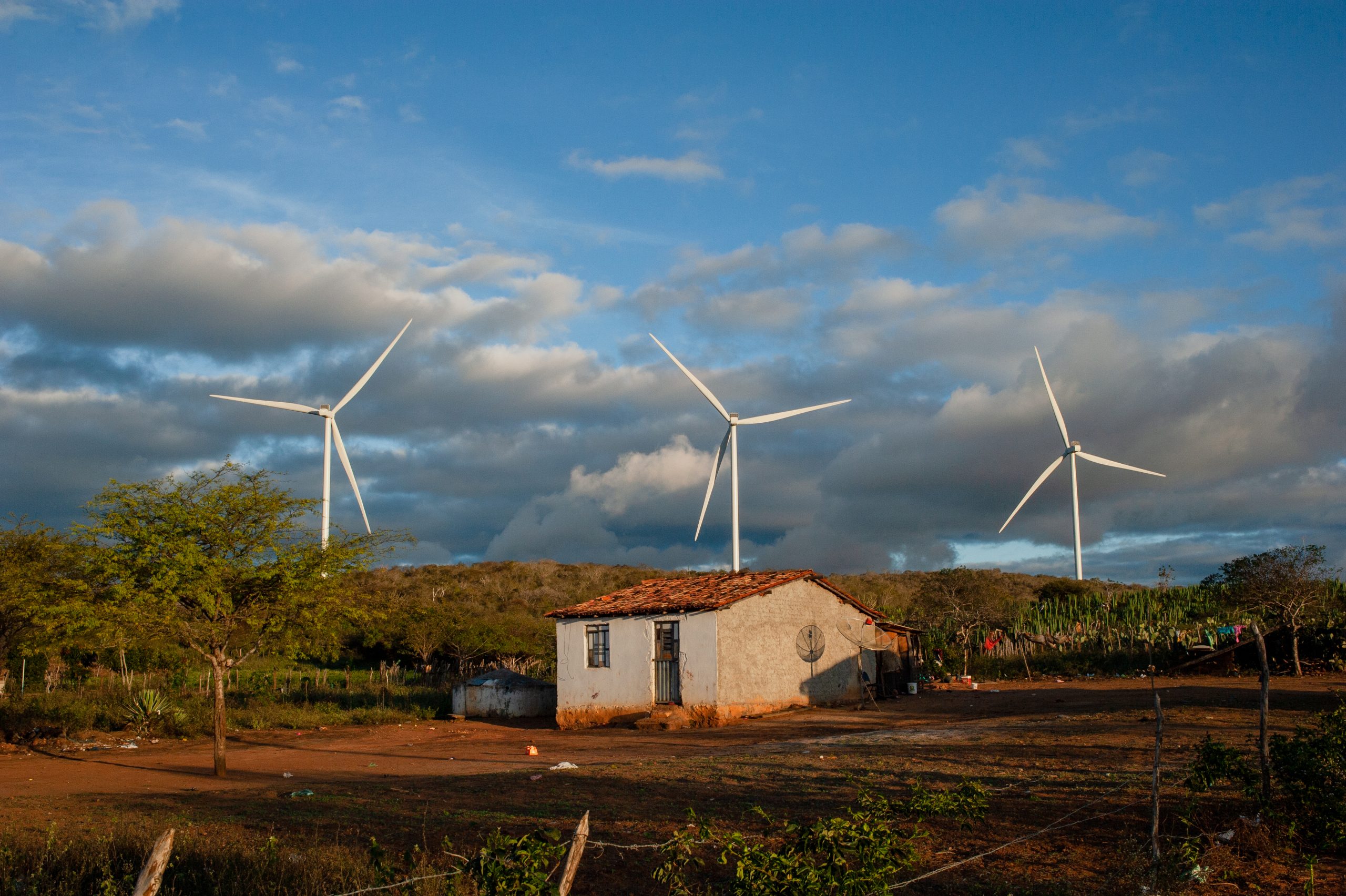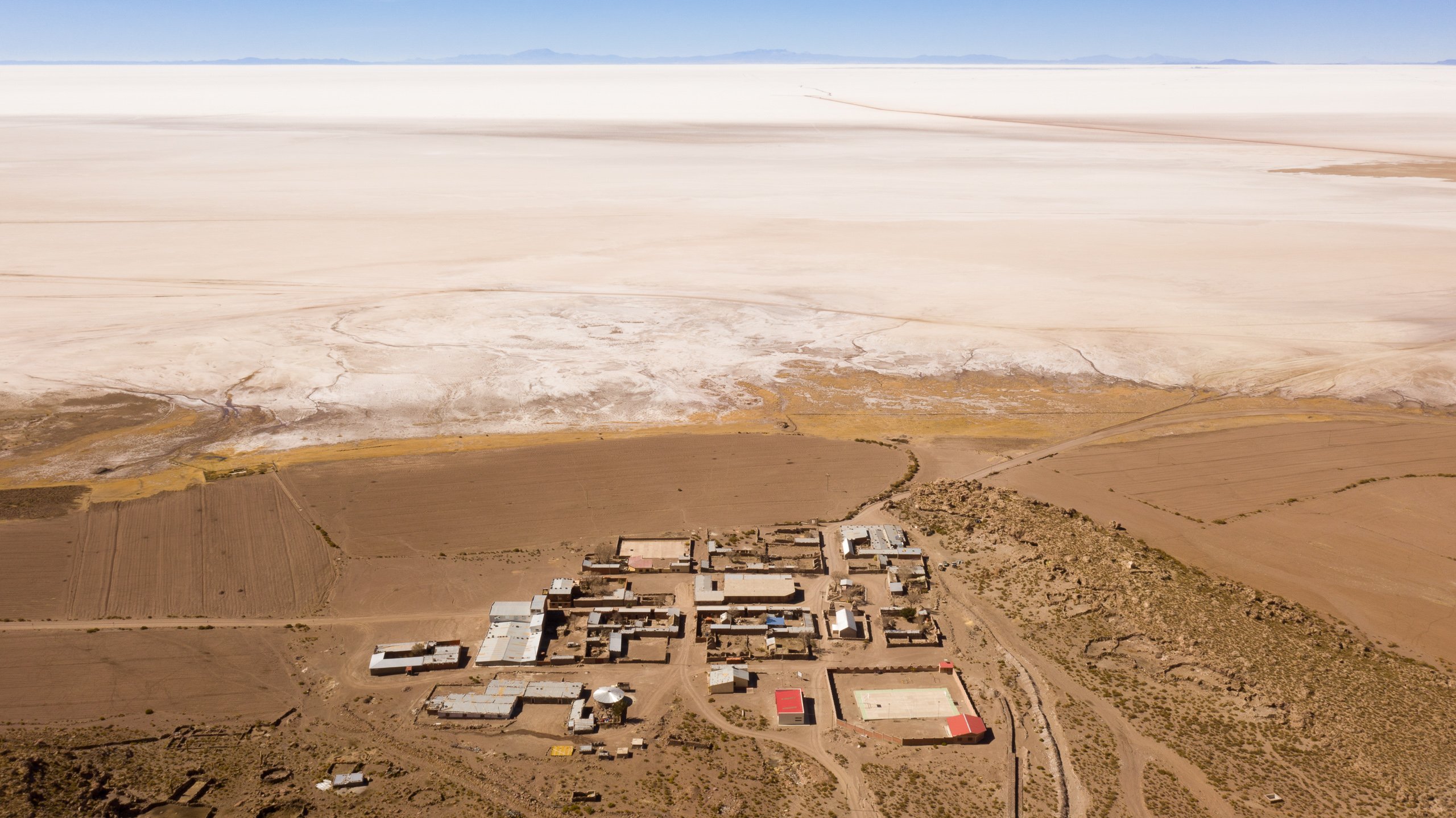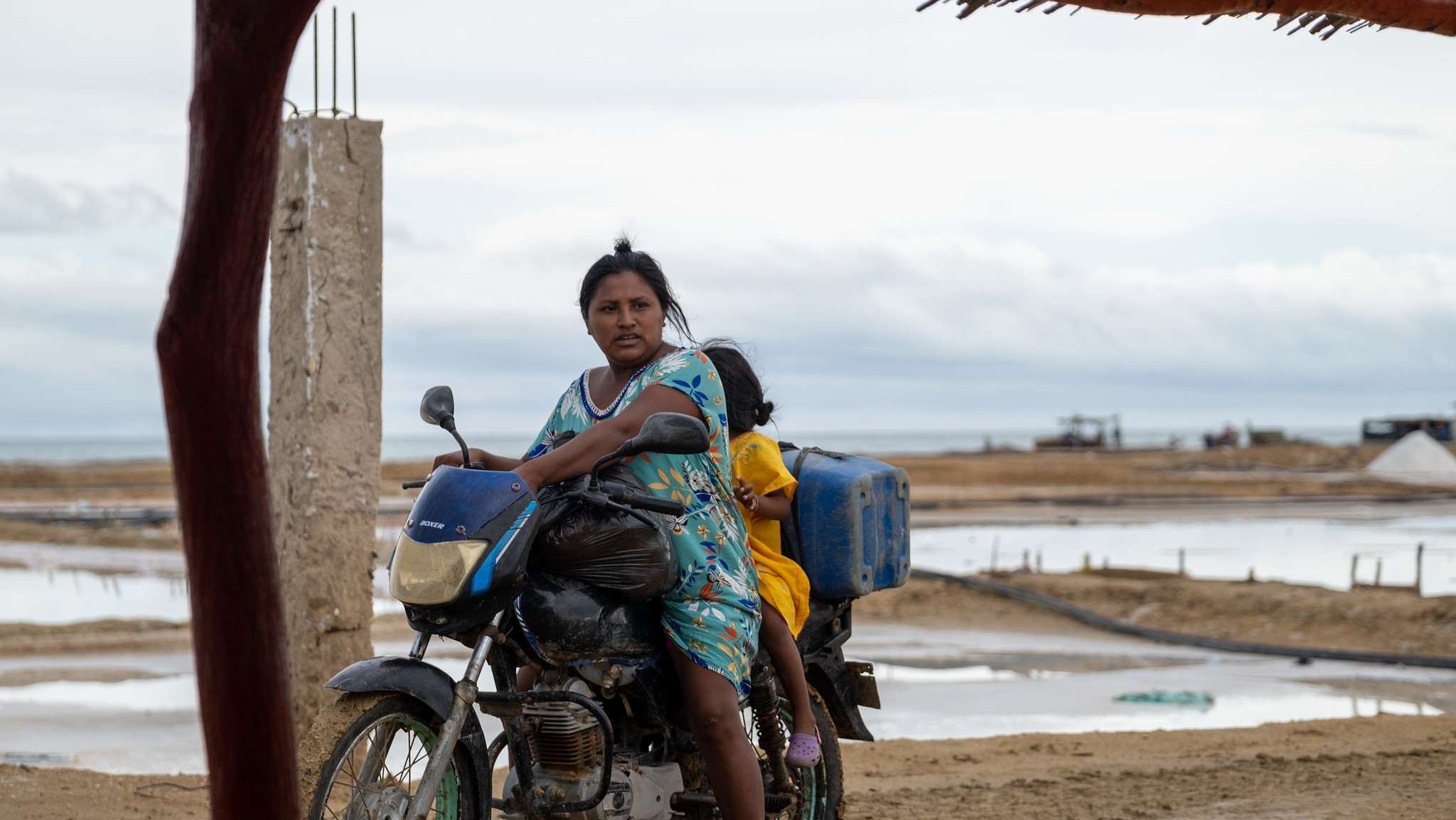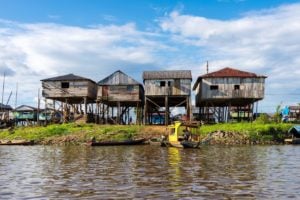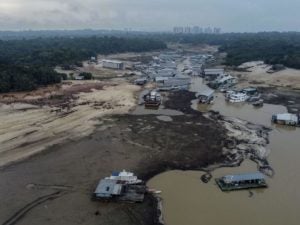Latin America could play an increasingly influential role in the global transition to clean energy, a new report from the International Energy Agency has said.
The IEA’s Latin America Energy Outlook has highlighted how the region’s abundant natural resources and renewable energy successes to date could position it to accelerate sustainable transitions at home and abroad.
With fossil fuels currently accounting for two-thirds of Latin America’s energy mix – well below the global average of 80% – and 60% of its electricity coming from renewables, the region has a “head start” in the push towards a cleaner energy system, said the IEA’s executive director Fatih Birol.
As the home to over a third of the world’s copper and lithium reserves, critical to global energy transitions, and with “enormous” potential for solar and wind power deployment, Latin America “can play an outsized role in the new global energy economy,” Birol said.
However, the report also reveals the prominent role that fossil fuels continue to have in Latin American energy mixes and economies. The IEA cautions that policy gaps and significant investment shortfalls must be bridged if Latin America is to realise its clean energy potential, and ensure fair and just transitions in fossil fuel-dependent countries.
Renewables drive change
The IEA’s outlook is its first-ever in-depth assessment of the Latin American energy sector and also lays out three scenarios for its future direction: one reflecting today’s existing policies, associated with a global temperature rise of 2.4C above pre-industrial levels in 2100; a second that assumes governments fulfil their announced climate and energy pledges, including goals under the Paris Agreement and the net-zero commitments made by 16 of the region’s 33 countries; and a high-ambition pathway for net-zero emissions by 2050, consistent with global temperature rise of 1.5C in 2100.
As the report highlights, Latin America already has one of the cleanest electricity sectors in the world, with hydropower comprising the bulk (45%) of generation. The region is projected to see significant growth in renewable electricity output under all three scenarios, rising from today’s 60% share to 80% by 2050 with today’s policies alone.
Hydropower has long been the foundation of many Latin American countries’ supply, but the IEA says its expansion is likely to be limited due to risks of conflict and environmental concerns, particularly as potential areas for its growth are concentrated in the sensitive Amazon Basin. The agency also highlights the risks to its output posed by droughts and changing rainfall patterns under climate change.
Instead, the development of solar and wind power, both onshore and offshore, present huge opportunities for the region, the IEA said, with countries such as Brazil and Chile now at the forefront. The agency reports that Brazil, Mexico, Colombia, Chile and Peru have in recent years added more solar power capacity than Africa, the Middle East, Russia and Central Asia combined. Brazil alone has been adding 1 gigawatt of solar capacity every month since July 2022.
This renewable energy potential could enable Latin America to produce lower-emissions hydrogen at a lower cost than most other parts of the world, the IEA said, and this could potentially be used to green sectors in industry and transport that are more difficult to decarbonise.
Latin American countries have already made moves on the nascent green hydrogen market. Argentina, Chile, Colombia, Costa Rica, Ecuador, Panama and Uruguay have published hydrogen strategies, with some announcing projects with production based on the electrolysis of water. However, some have met opposition from communities and environmental groups due to concerns over their water demand in areas prone to water stress.
Fossil fuels’ role endures
Despite Latin America’s progress and promise in renewable energy, fossil fuels are still the main energy source in the region, and oil remains the dominant fuel in many countries, primarily for use in transport and industry.
The IEA reports that the region holds around 15% of global oil and natural gas resources, and less than 1% of global coal resources. Among these are large reserves of shale gas, some of which are being actively developed in Argentina, which is moving to position itself as a gas exporter.
Brazil, Venezuela and Colombia are among Latin America’s leading exporters of oil, while Chile, the Dominican Republic and Panama are among the countries highly dependent on oil and gas imports to meet domestic energy demand. The IEA notes that oil and gas production in the region rose by around 5% in 2022, and growth is again expected this year; the region’s oil production to 2030 is projected to outpace its growth in demand, with increased output likely destined for export.
While total energy demand in Latin America increases in each of the IEA’s scenarios, how this will be met varies widely. Under current policies, the agency projects that fossil fuels would continue to meet most of the region’s energy demand, but that their share in the energy mix would fall from 67% in 2022 to 63% in 2030. If announced pledges are met, consumption of all fossil fuels peaks in the middle of the decade and their share in the energy mix declines to 57%. In the ambitious net-zero pathway, a faster uptake of renewables and a higher energy efficiency would push the share of fossil fuels to as low as 50% by 2030.
Regional minerals, global change
The IEA’s outlook underscores the significant role Latin America is likely to play in the global energy transition, through the production of materials that are essential components in many of today’s rapidly growing clean energy technologies. Around half of global reserves of lithium, and more than a third of copper and silver reserves are thought to be located in the region.
In addition, the agency notes, the region has potential to supply significant quantities of graphite, nickel, manganese and rare earth elements critical to the energy transition. Brazil alone holds around one-fifth of the global reserves of each of these resources, though its output is currently relatively small. Brazil also has major reserves of bauxite, used in the production of aluminium, a key component in power lines.
The IEA said governments should ensure companies comply with environmental and social standards, acknowledging a widespread “anti-mining sentiment” among local communities after high-profile environmental disasters during the last decade, such as the Brumadinho tailings dam collapse in Brazil in 2019. It called for further dialogue between stakeholders, investors and communities.
The region should also increase efforts to move beyond extraction and up the supply chain, the IEA recommended, with refining activities able to generate more employment and added value than mining. Some countries are already exploring these avenues in relation to lithium industrialisation, increasing funding for research and development and welcoming new facilities, such as the new lithium battery plant near Buenos Aires, Argentina.
Stephanie Bouckaert, the IEA outlook’s lead author, said at the report’s launch on 8 November that an expansion into higher levels of the supply chain is “an opportunity for the world”, as processing and refining in a region with a high share of low-emissions electricity means “critical minerals will be greener”.
Challenges for the transition
Despite the significant potential, the IEA warned Latin America still faces many challenges in realising its energy transition, most notably because of the lack of investment. The agency reports that the region has seen one of the lowest levels of energy investment as a share of GDP, at below 3% between 2014 and 2022, lower than Russia and Central Asia (5%) and sub-Saharan Africa (4%) during the same period.
To fulfil announced climate and energy pledges, the IEA projects that financing for renewables in Latin America would need to double to US$150 billion a year by 2030 and increase fivefold by 2050. The report makes special mention of Chinese development banks as a notable source of finance in the energy sector for some of the region’s governments, but notes the rapid decline in these loans since 2016.
The IEA highlights a need to deliver “people-centred and inclusive” energy transitions that present opportunities for employment and access in a region that remains one of the world’s most unequal.
At least 17 million people, around 3% of the region’s population, are said to still lack access to electricity, while 74 million have no means for clean cooking – a driver of pollution and poor health outcomes. “More needs to be done to achieve universal access on both fronts,” the IEA says. It highlights the provision of affordable energy and support for lower income groups as a “key concern”.
The report also focuses on the implications of clean energy transformations for regional employment, a vital aspect of just transitions. The IEA notes that the energy sector currently accounts for around 2% of the workforce in Latin America and the Caribbean, some 6 million jobs; should announced pledges be realised, this could increase by 15% by 2030, with as many as 4 million people working in clean energy.
The region’s energy sector may, however, face further challenges from the impacts of climate change. By 2050, the IEA reports, over 70% of the region’s installed hydropower capacity is projected to experience drier climates, with countries having already experienced severe drops in output during recent droughts, exacerbated by climate change. Increasing temperatures are also highlighted as a concern, with the potential to hamper solar and wind power, unless efforts are made to increase their resilience.
This could be partly addressed by an increased regional energy integration, which currently remains limited in Latin America, the IEA said. “Linking electricity demand and supply from different climate zones provides more resilience to changing conditions,” the agency writes, noting that this could also help countries to cope with the intermittency of renewable energy generation.
One clear message is emerging from the report: Latin America and the Caribbean has a major opportunity at its fingertipsFatih Birol, executive director, International Energy Agency
The report identifies four key actions to reduce energy-related CO2 emissions: ramp up the adoption of renewables; advance the electrification of industry and transport; increase energy efficiency; and boost access to clean cooking solutions. If countries’ announced pledges are realised, the region would see renewables meet all new energy demand this decade.
The energy transition, said José Manuel Salazar-Xirinachs of the UN’s Economic Commission for Latin America and the Caribbean at the report’s release, could be a “triple green solution” for the region, to improve wellbeing, build sustainable and resilient economies, and drive decarbonisation to protect the environment.
“One clear message is emerging from the report: Latin America and the Caribbean has a major opportunity at its fingertips,” Birol said. “However, the transition to clean energy has to be an orderly one. You can’t go from one day economies based on oil and gas to tomorrow all being based on clean energy. All segments of the population need to benefit from the transition, especially the economically disadvantaged ones.”

